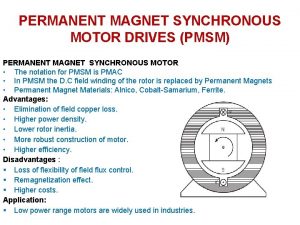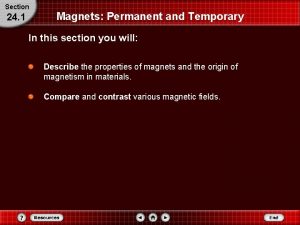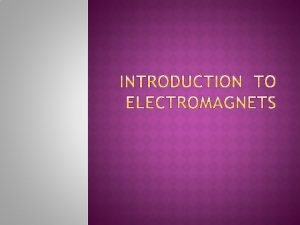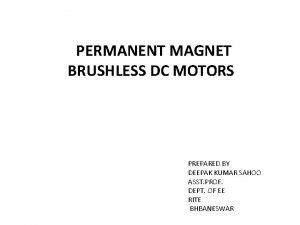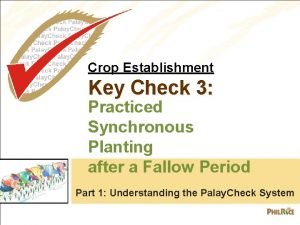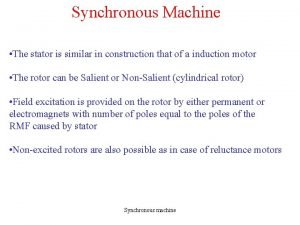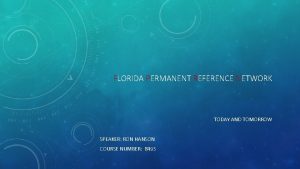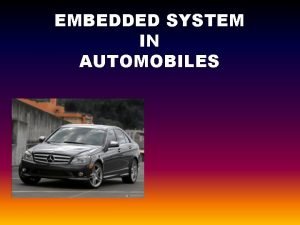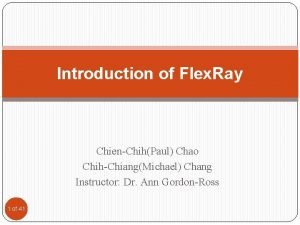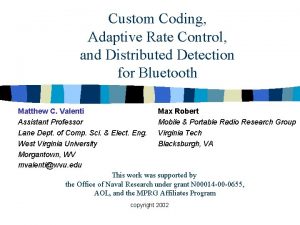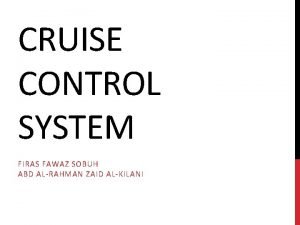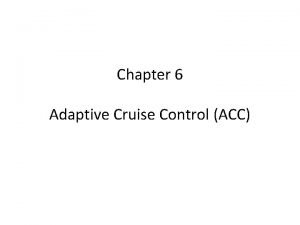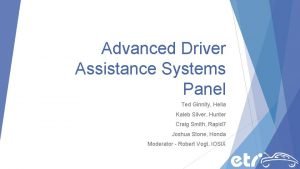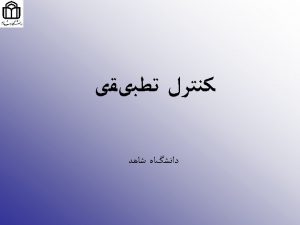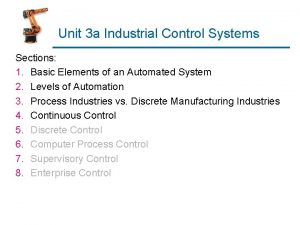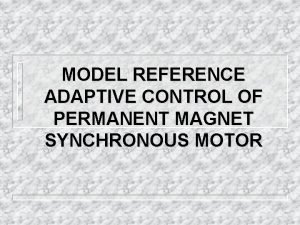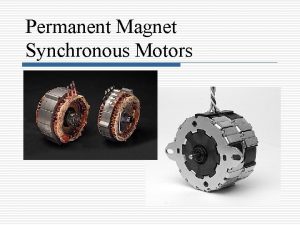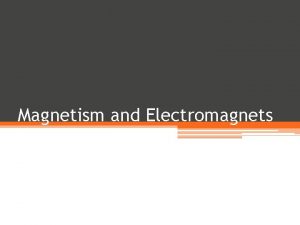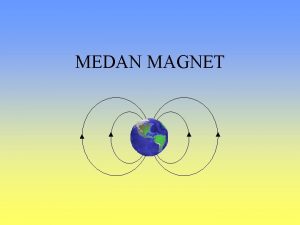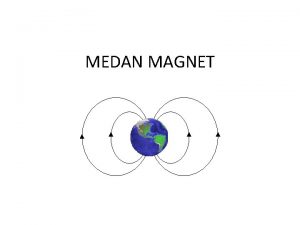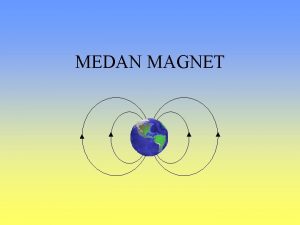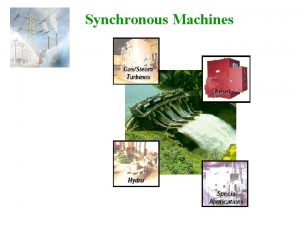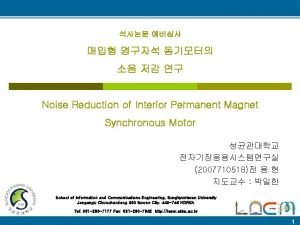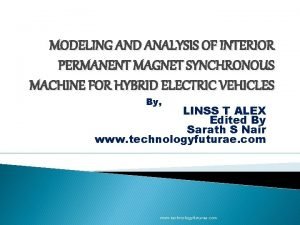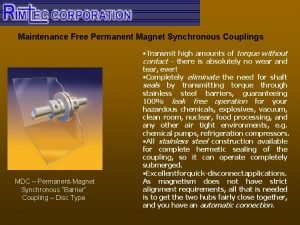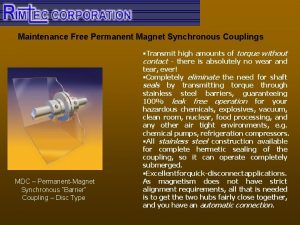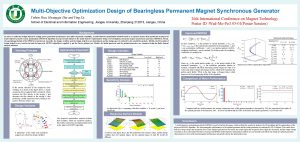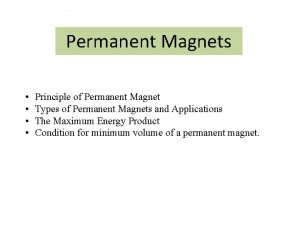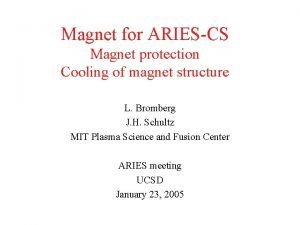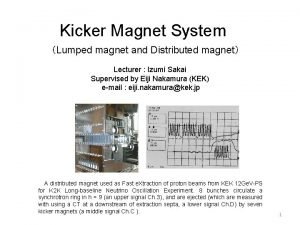MODEL REFERENCE ADAPTIVE CONTROL OF PERMANENT MAGNET SYNCHRONOUS



















- Slides: 19

MODEL REFERENCE ADAPTIVE CONTROL OF PERMANENT MAGNET SYNCHRONOUS MOTOR DRIVE WITH FORCED DYNAMICS

Model of Permanent Magnet Synchronous Motor Non-linear differential equations formulated in the magnetic field-fixed d, q co-ordinate system describe the permanent magnet synchronous motor and form the basis of the control system development.

Control System Structure for PM Synchronous Motor

Master & Slave Control Laws Motor equation for id=0 1. Vector control condition Demanded dynamic MCL produces demanded values 2. Linearising function B. Slave control law of the current components

SET OF OBSERVERS FOR STATE ESTIMATION AND FILTERING FOR SMPM

These terms are treated together as a disturbance vector The pseudo-sliding mode observer The remainder of the motor equation forms the basis of the real time model of the observer.

The Sliding Mode Observer and Angular Velocity Extractor The basic stator current vector pseudo sliding-mode observer is given by: For the purpose of producing a useful formula for perfect constant parameter estimates may be assumed: The required estimates are equivalent values where is a high gain unfiltered angular velocity estimate can be extracted:

The Filtering Observer Filtered values of and are produced by the observer based on Kalman filter Load torque is modelled as a state variable where design of: needs adjustment of the one parameter only or as two different poles: Electrical torque of SM is treated as an external input to the model

Original control structure of speed controlled synchronous motor ua ia_dem Master id_dem Transf. control iq_dem law dq /α, β ib_dem and ic_dem Slave control law POWER electronics ia ib ic two phase oscillator Filtering observer ua, b, c cosq sinq id ia ib Transf. abc / a, b and a, b / d, q u d u q id iq SMPM uc α, β/a, b, c Discrete ub Angular velocity Extractor vd_ekv vq_ekv Sliding mode Observer iq

Inner & Middle Loop (real system) correction loop MRAC outer loop Model TF Reference model (of closed-loop system) Parameter mismatch increases a correction Mason’s rule

Experimental Verification Parameters of the PMSM: Pn=475 W; wn=157 rad/s; Tn=0, 47 Nm Equivalent Circuit Parameters: Rs=1, 26 W; Ld=9, 34 m. H; Lq=9, 2 m. H; p=2; J=0, 0005 kg. m 2; YPM=0, 112 Vs Parameters of IGBT Semikron 6 MBI-060 are as follows: nominal voltage: 1000 [V] , nominal current: 6 x 10 [A]. Current sensors are as follows: LEM LTA 50 P/SPI.

EXPERIMENTAL RESULTS 1 Rotor Speed without MRAC

EXPERIMENTAL RESULTS 2 Rotor Speed including MRAC

Simulation results without outer loop and with outer loop a) b) c) d) a) stator currents, b) rotor mg. fluxes, c) applied torque and estimated torque and rotor speed from filtering observer d) rotor speed and ideal speed from transfer function

Experimental Results without outer loop and with outer loop a) a) b) b) a) ideal speed and estimated speed from filtering observer and b) ideal speed with real rotor speed from speed sensor.

Acceleration Demands for Three Various Dynamics Constant Acceleration First Order Dynamic Second Order Dynamic

Experimental Results for Synchronous Motor Drive First Order Dynamic Constant Acceleration wd = 800 rpm, 600 rpm, Tsettl= Tramp= 0. 3 s 0. 05 s Second Order Dynamic wd = 600 rpm, Tsettl= 0. 3 s

Second Order Dynamics for Various Damping Factor 60 z=0. 5 50 40 z=2 30 20 z=1 10 0 -10 -0. 2 0. 4 0. 6 Tsettl=0. 15 s , wd = 40 rad/s 0. 8

Conclusions: A new approach to the control of electric drives with permanent magnet synchronous motors, when original forced dynamics control system was completed with outer control loop based on MRAC, has been developed and experimentally proven. n Three various prescribed dynamics to speed demands were achieved and beneficial influence of added control loops was observed. n Application to the vector controlled drive with PMSM is possible. Further improvement of this control technique can continue via application of more sophisticated PWM strategy. n
 Pmac motor magnet
Pmac motor magnet What happens when you break a magnet in half
What happens when you break a magnet in half Difference between permanent magnet and temporary magnet
Difference between permanent magnet and temporary magnet Apakah magnet berasal dari kata magnesia
Apakah magnet berasal dari kata magnesia Blpm motor
Blpm motor Synchronous planting
Synchronous planting Synchronous motor construction
Synchronous motor construction Florida permanent reference network
Florida permanent reference network Florida permanent reference network
Florida permanent reference network Adaptive pest control
Adaptive pest control Embedded system in automobiles
Embedded system in automobiles Adaptive cruise control
Adaptive cruise control Adaptive rate control
Adaptive rate control Firas fawaz
Firas fawaz Adaptive cruise control diagram
Adaptive cruise control diagram Adaptive cruise control
Adaptive cruise control Adaptive control astrom
Adaptive control astrom Adaptive control
Adaptive control Reference node and non reference node
Reference node and non reference node Reference node and non reference node
Reference node and non reference node
